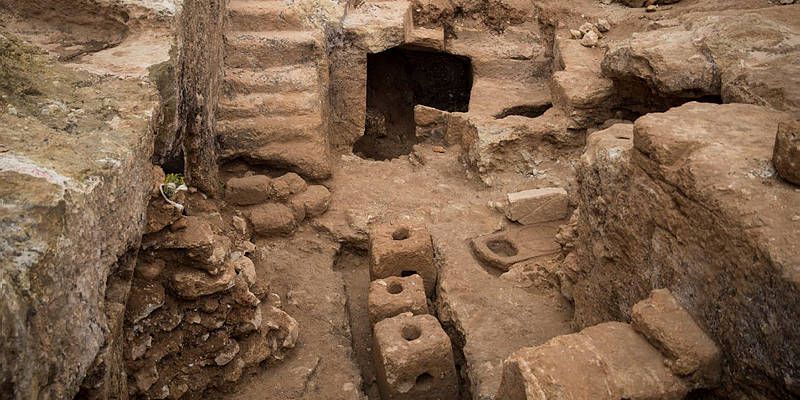The earth covering the courtyard of the burial estate contained some large building stones, some of which are elaborate architectural elements associated with the Second Temple period.
By United With Israel Staff
An excavational dig taking place in the Sharafat neighborhood of eastern Jerusalem, where an elementary school is to be built, has uncovered the remains of a Jewish village dating back some 2,000 years to the Hasmonean period, says the Israel Antiquities Authority (IAA).
The excavation is being carried out on behalf of the Jerusalem municipality, funded by the Moriah Jerusalem development corporation.
The IAA says that the finds have included the remains of a large wine press containing fragments of many storage jars, a large columbarium cave (rock-cut dovecote), an olive press, a large ritual bath, a water cistern, and rock quarries.
“It seems that this burial estate served a wealthy or prominent family during the Hasmonean period. The estate was in use for a few generations as was common in that era,” according to Ya’akov Billig, who is directing the excavations for the IAA.
The most significant feature of the excavation is an extravagant burial estate, which included a corridor leading to a large courtyard chiseled into the bedrock, says the IAA.
“Such quality craftsmanship of architectural elements is very rare, found mostly in monumental buildings or burial estates in the Jerusalem area,” it added.
The entrance into the multi-chambered burial cave was through its facade, behind which oblong burial niches were carved into the stone walls.
The earth covering the courtyard of the burial estate contained some large building stones, some of which are elaborate architectural elements associated with the Second Temple period.
The current excavation is said to have exposed only a small part of a larger village that existed to its south. However, despite the limited exposure, the finds seem to indicate that the village was of an agricultural nature, and among other things produced wine and olive oil, as well as breeding doves. During the Temple eras, doves were needed for both a Temple offering and for food.
